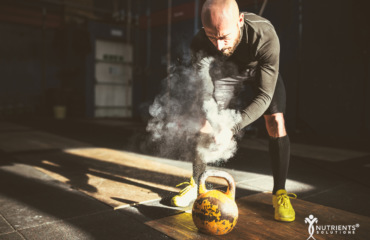Wellness Demystified: We Can Help You Discover Optimum Health
The Most Common Running Injuries And How to Prevent or Treat Them

Nearly all runners will have experienced some form of injury—an unfortunate side effect of running. If you know how to take the necessary steps to minimize risk and how best to recover from injury, then you can maintain performance while staying healthy and enjoying your training. This article lists some of the most common running injuries and goes over how they occur, how to prevent them, and how best to recover while reducing the chances of a repeat injury.
Running is a healthy and fulfilling activity, but injuries and running, unfortunately, go hand-in-hand (or rather foot-in-foot). Nearly everyone will have dealt with general pain and discomfort at one time or another, as well as some more serious running injuries. This can affect your performance, your general activity levels, and quality of life. Therefore, it’s essential that you find a way to avoid this. While you can never completely prevent injuries, there are several steps you can take to lessen your chances of injury or recover quickly from conditions. Here are some of the most common ailments that affect runners and some tips for minimizing their impact.
Runner’s Knee
Runner’s knee, as the name suggests, is a widespread running injury that affects many people of all ages and activity levels. Although it is more common among casual runners and women, whose wider hips cause more stress on the knee. In fact, recent studies have shown it to be the most common injury complaint from runners. Technically known as Patellofemoral Pain Syndrome, it essentially describes a dull pain and general discomfort behind or around the top of the patella (kneecap). Runner’s knee can have a range of causes, which are hard to pin down—including worn cartilage, muscular imbalances, and the compounding effects of repetitive motions.
Here are a few ways to prevent runner’s knee and reduce its effects, if you’re already suffering:
- Wear the right footwear; the wrong shoes for your foot type or gait can affect your running mechanics and put a strain on your knees. Consider specialist, bespoke running shoes—including either padded, minimalist, or orthotic inserts.
- Strengthen and stretch muscles—weak quadriceps can cause patellar tracking, while tight calves and hamstrings can also affect your gait and put unnecessary strain on the knees. Resistance exercises and thorough stretching can remedy this.
- Control mileage increases—hard surfaces and sudden increases in mileage can contribute to runner’s knee. Gradually build up to longer runs and consider softer surfaces if you’re already affected.
- If you’re already in pain, stop completely—it might hurt to be inactive when you’re raring to go, but if it’s a severe injury, then doing nothing for two or three weeks can be the best course of treatment. Running through severe pain is a surefire way of compounding your injury.
Shin Splints
Shin splints are another common running injury that can affect your comfort and performance. A general umbrella term, it refers to pain on either the outside or inside of the leg, between the knee and ankle. This condition affects both beginners and seasoned competitors, but it can have a range of causes.
Here are a few ways to treat, minimize the effects, and avoid shin splints entirely:
- Build up your mileage gradually—“too much, too soon” describes the cause of shin splints for many runners, especially beginners. You can’t go from inactivity to running half marathons every couple of days without your body being affected.
- Introduce new terrains slowly—if you’ve been training on flat surfaces all your life and suddenly switch to hilly terrain, you increase the chance of injury. Slowly transition to new training methods to minimize risk.
- Take things easy—experts agree that excessive activity when you already have shin splints can exacerbate the situation. Instead, take some time off, or decrease the duration and intensity of your training, depending on the severity. Icing and stretching can also reduce pain and inflammation.
Luckily, shin splints shouldn’t be a lasting issue if you follow this advice. If the problem persists, the cause might be something else, and you may need to consult a professional.
Sprained Ankle
Ankle sprains are another injury that’s unfortunately relatively common within running circles. Simply put, a sprained ankle is where you tear the ligaments of the ankle. The most common type of ankle injury is an inversion sprain, where your foot rolls inward and causes pain and swelling on the outside of your ankle. This injury can happen at almost any time for runners who lose their footing. Also, running on uneven or slippery terrain can increase the likelihood of this type of injury. While runners might dismiss this as a minor issue, sprained ankles are weakened and more likely to be reinjured in future. Repeated strains can increase in severity until they can seriously affect mobility, so proper rehab is essential.
It’s hard to avoid ankle sprains, but just be mindful of conditions and stay focused. If you’ve suffered a sprained ankle, here’s what you should do:
- Remember RICE—which stands for Rest, Ice, Compression, Elevation, is the tried-and-tested treatment for a range of soft-tissue injuries and should be your first course of action in a day or two following an ankle sprain. That can reduce inflammation and speed up healing times.
- Restore mobility—once the swelling has reduced and you can stand more comfortably, slowly introduce some exercises such as pointing and flexing your ankle, before moving to slow rotation.
- Improve ankle strength—incorporate some resistance exercises to strengthen the ankle region, first isometric (fixed position) and then isotonic, using resistance bands, for example.
- Gradually return to running—once you’re confident you can move without significant pain or discomfort, slowly start building back up to your previous level of training. If you still feel sharp pain, stop running. You can also use other forms of exercise to ease into things, such as cycling or the elliptical.
Achilles Tendonitis
Your Achilles tendon is a large tendon that connects muscle to bone—in this case, your primary calf muscles (gastrocnemius and soleus) to your heel bone. Achilles tendonitis is an overuse injury that is caused by repetitive motions over time, making it a prime injury for runners. The symptoms include pain and inflammation along the tendon and near the heel, as well as stiffness and loss of strength in the affected area.
Here are some ways you can reduce symptoms of Achilles tendonitis or prevent them entirely:
- RICE—like other injuries on this list to the soft tissue, there isn’t a better initial treatment method than RICE. Keep your weight off the problem area, keep it elevated, and use ice regularly. You may also consider some brace or support for compression.
- Managing increases in training—overtraining will stress the Achilles, as will a sudden mileage increase or too much hill training/speed work. If you feel pain, then stop running and apply the RICE principles to your injury.
- Stretching and massage—stretching of the calves and shins prevents the chances of Achilles injury, and can also aid recovery. Massage, stretching, and mobility exercises are also essential after an injury, to ensure that the scar tissue reforms correctly and isn’t vulnerable to re-injury.
- Resistance training—if you’re not injured, then resistance training of the calves and other leg muscles is a great preventative measure. In the aftermath of an injury, gradually move from non-weight bearing to weight bearing and finally to resistance exercises.
Be Smart
These are just a few of the primary injuries for runners, but many people will have experienced these conditions in the course of their training. If you want to prevent them in the first place or reduce the chances of a repeat injury, then it pays to be sensible about your training and what you do to supplement it. From stretching to resistance exercises to the principles of RICE, you can ensure that you come back stronger than ever after these common running injuries, as long as you take things slowly and do all you can to minimize risks.
© 2019 Nutrients Solutions, LLC. All rights reserved. Disclaimer: The information provided is for educational purposes only and does not constitute medical advice. Always seek the advice of your physician or qualified healthcare provider with any questions or concerns about your health. Check with your doctor before beginning any exercise program. Never disregard or delay seeking medical advice because of something you have heard or read in this article or the internet.












